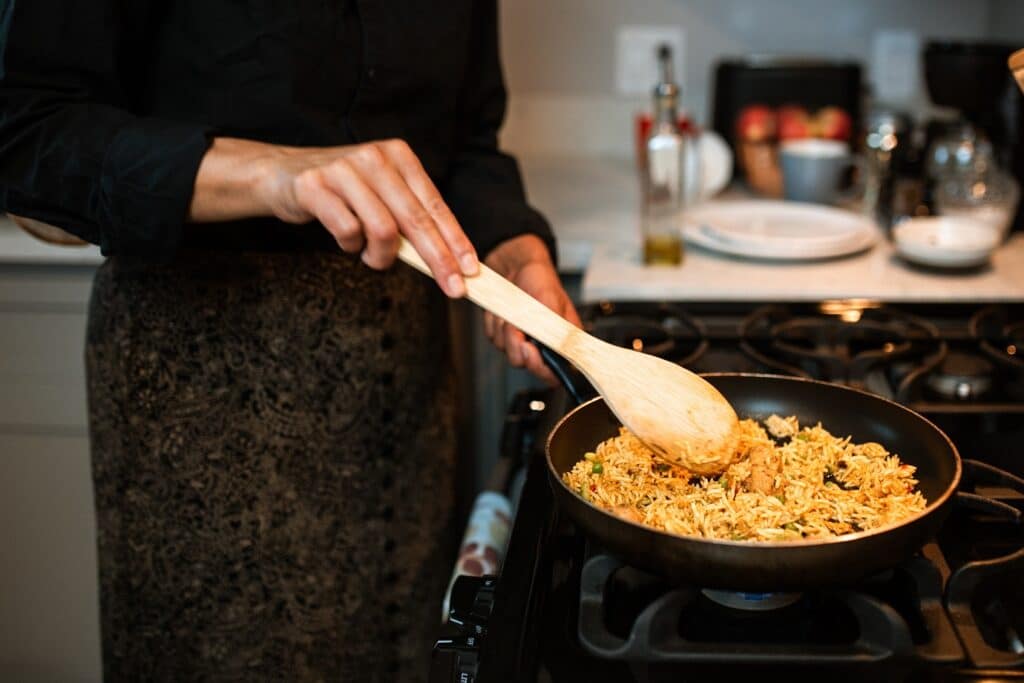Eight years ago, we moved into a home with an induction cooktop. As a public health physician and as a mother, I have loved cooking in my gas-free kitchen, knowing it’s a safe choice for my family. I will never look back.
History has shown us it can take decades for public health warnings and information to result in positive changes for people’s health, by which time a lot of damage has been done.
First it was tobacco, where the tobacco industry went to extraordinary lengths to convince people their product is healthy and safe.
Then, it was asbestos. Millions of Australians – in fact one in three households – lived with this toxic material in their homes and every time they renovated or demolished those homes, they were unwittingly exposed to a deadly substance.
Of course now, thanks to scientists and health professionals, the vast majority of us are well aware that these substances are harmful to our health. As a result, smoking levels are at a record low; very few people would willingly expose their children to cigarette smoke.
For the past 20 years, asbestos has not been allowed as a building material and now we know how to safely remove it from our homes.
New data from a new national poll of 1,126 Australians, commissioned by the Climate Council, shows 90% of Australians are well aware of the health dangers of tobacco and asbestos, yet only 32% are aware that gas in the home is a significant health hazard.
Unfortunately, we’re now seeing echoes of cover ups and misinformation around gas. The gas industry is keen to downplay the risks and brand their ever-more expensive product as ‘natural’ and ‘harmless’.
Just as doctors spoke up on tobacco and asbestos, we now have a responsibility to sound the alarm on the health risks of gas.
Here’s why. Gas cooking is a major source of indoor pollution. Burning gas produces a whole range of air pollutants, including carbon monoxide (CO), formaldehyde, nitrogen dioxide (NO2) and PM2.5 (particulate matter less than 0.0025 millimetres in diameter).
NO2 is strongly associated with asthma. In fact, a child living with gas cooking in the home has a comparable risk of asthma to a child living with household cigarette smoke.
And research shows that gas cooking is responsible for up to 12% of the childhood asthma burden in Australia. There are also growing health concerns about PM2.5.
Doctors used to think that PM2.5 was just linked with heart and lung disease. However, we now understand that – because these air pollution particles are so small – they can be absorbed into the bloodstream and have much more widespread impacts in the human body.
PM2.5 is now linked with dementia, diabetes, high blood pressure and low birthweight and premature babies.
To add to this, gas is a double health risk for Australians. Not only a major source of indoor air pollution, gas is a potent fossil fuel driving climate change. The main component of gas – methane – is a ‘super pollutant’ more than 80 times as polluting as carbon dioxide (CO2), over a 20 year timeframe.
After a really tough few years of major disasters in Australia, there is no mistaking that climate change is taking a huge toll on our communities and our health. The repercussions of climate change include disease, injuries and deaths from extreme heat, risk to life from storms, floods and droughts, but also indirect health impacts: a rise in infectious diseases, allergens, mental health impacts, and food and water insecurity.
Worryingly, it’s coming to light that gas appliances don’t even need to be switched on to emit pollutants. Research from the USA in 2022 found that more than three-quarters of methane emissions occurred while stoves were off, suggesting that gas fittings and connections to the stove and in-home gas lines are responsible for most emissions, regardless of how much the stove is used.
And that methane leaking from stoves inside homes has the same climate impact as about 500,000 cars.
In short, it’s extremely nasty stuff. And the more we discover about how it’s harming our children and our health, the more proactive we should be in getting rid of it.
So what can be done?
It’s time to take back control. We can all take action by pledging to make gas-free choices, where and when you can.
The Climate Council – where I contribute as a health expert – has launched an ‘I Quit Gas’ campaign today. We are calling on state and territory governments to help Australians say goodbye to gas for good with interest-free loans for switching to all-electric home appliances.
It really is a win-win situation. Because amongst everything else, gas is also a key culprit behind the sky-high energy prices that are fuelling Australia’s cost of living crisis.
Policies to help households move from gas-fired to electric-powered appliances will unlock bill savings, while transitioning our national electricity grid from gas to 100% renewable energy prices will send wholesale energy prices plummeting.
People renting or living in social housing are more likely to have gas appliances, and those appliances more likely to be older and poorly maintained.
This means those people are more exposed to the health harms of indoor air pollution. And for them, it’s harder to remove gas appliances. This is where interest-free loans from the government should be readily available to incentivise landlords to do the right thing to protect the health of their tenants. And in the meantime, renters can invest in an affordable induction cooktop and ensure their homes are well ventilated while cooking.
I’d encourage everyone to learn more about the dangers of gas in the home, and if this hits a nerve, sign up to the gas free pledge and sign our open letter to the Government to help rid this scourge from our homes for good.


